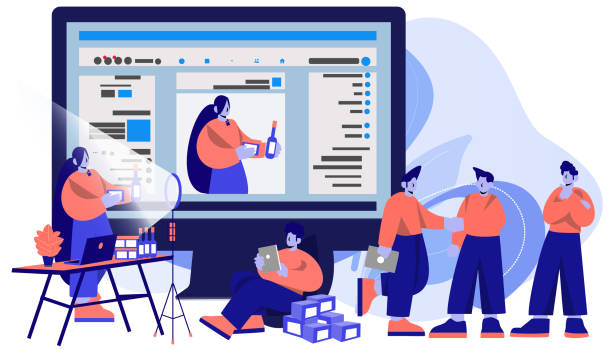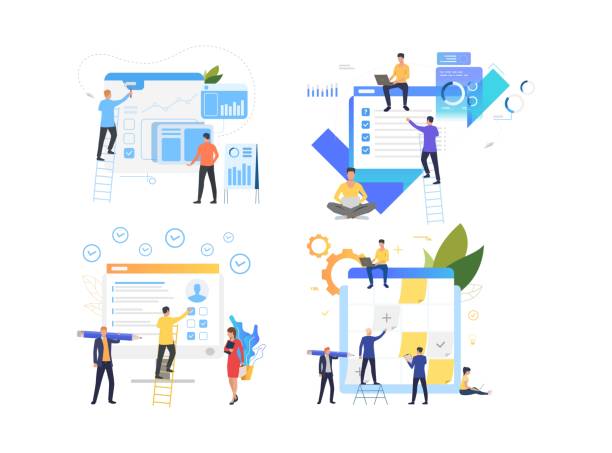The Importance of Secure Website Design in the Digital World
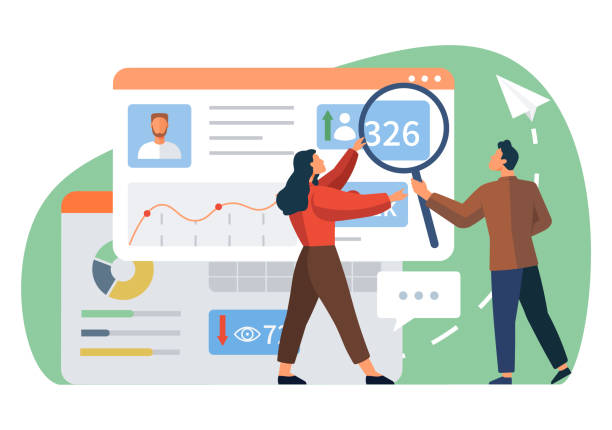
In the current digital age, where business and social activities have increasingly moved to the online space, #CyberSecurity of websites is more vital than ever.
A secure website not only ensures the #ProtectionOfSensitiveInformation of users and businesses but also builds and maintains #UserTrust.
Customers and visitors expect their personal and financial data to be safeguarded against any misuse or unauthorized access.
Neglecting this can lead to loss of credibility, heavy fines, and even bankruptcy.
Therefore, a comprehensive and proactive approach to website security, which we call secure website design, is an unavoidable necessity.
This issue is not only relevant to large businesses but is also highly important for startups, bloggers, and even personal websites.
A successful cyberattack can compromise data, disrupt website functionality, and destroy online reputation.
Cybersecurity in website design does not just mean installing a firewall or an SSL certificate; rather, it is a continuous and multifaceted process that includes secure development, regular maintenance, and awareness of the latest threats.
Secure website design must begin from the initial stages of website planning and architecture and continue throughout its lifespan.
Ignoring these principles can have a heavy price; loss of customer information, data corruption, and service disruption are just some of the consequences of website insecurity.
This article will delve into various aspects of secure website design to provide a comprehensive guide for creating a safe and reliable online space.
Awareness of these principles and their application is not only an investment in protecting your digital assets but also an investment in the future and longevity of your business in today’s connected world.
Is your current e-commerce website design not generating the sales you expect?
Rasawweb specializes in professional e-commerce website design!
✅ An attractive and user-friendly website aimed at increasing sales
✅ High speed and security for an ideal shopping experience⚡ Get a free consultation for online store design with Rasawweb!
Common Web Security Threats and Solutions

In the path of #SecureWebDevelopment, understanding common threats is crucial.
Websites are constantly targeted by various #CyberAttacks, ranging from simple intrusions to complex #Malware.
One of the most common attacks is SQL injection, through which attackers inject malicious code into the database to extract or manipulate sensitive information.
Another is XSS (Cross-Site Scripting) attacks, which inject malicious code into legitimate web pages and display it to the end-user, potentially stealing user session information.
DDoS (Distributed Denial of Service) attacks also overwhelm the server with a huge volume of traffic, rendering it unavailable.
To counter these threats, there are several approaches in secure website design.
Against SQL injection, using Prepared Statements and parameterizing queries is essential.
For XSS, user inputs must be carefully validated and filtered, and outputs must also be encoded.
Against DDoS attacks, using DDoS protection services and Content Delivery Networks (CDNs) can help manage traffic and filter malicious requests.
Additionally, security flaws such as incorrect server configurations, weak password management, and lack of software updates create significant vulnerabilities.
Implementing strong authentication and authorization mechanisms, encrypting data in transit and at rest, and using Web Application Firewalls (WAFs) are other important solutions to strengthen website security.
Awareness of these threats and continuous implementation of preventive measures are an integral part of a comprehensive approach to secure website design.
This approach means continuously identifying vulnerabilities and promptly fixing them.
Basic Principles of Secure Website Design and Implementation
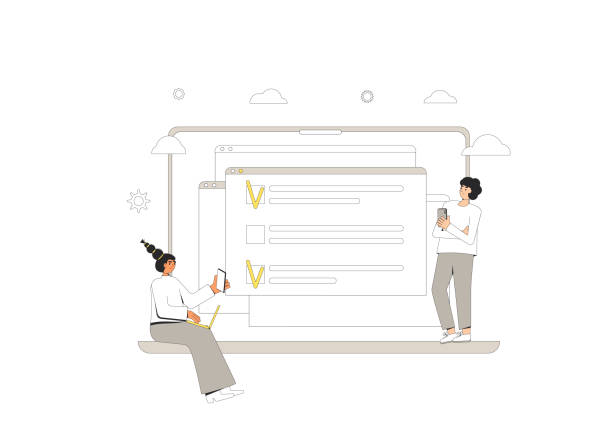
Implementing secure website design requires adhering to a set of basic principles that form the foundation of an impenetrable website.
The most important of these principles is the use of #HTTPSProtocol for all communications.
HTTPS, by using an SSL/TLS certificate, #DataEncrypts information between the user’s browser and the server, preventing eavesdropping or manipulation by unauthorized individuals.
This is crucial not only for security but also for SEO ranking.
The second principle is the use of a #WebApplicationFirewall (WAF), which monitors incoming and outgoing website traffic and prevents common web attacks such as SQL Injection and XSS.
Firewalls can be implemented as hardware or software.
Another principle in secure website design is proper password management and multi-factor authentication (MFA).
Encouraging users to use strong passwords and enabling MFA provides an important defensive layer against brute-force attacks and credential theft.
Also, regular updates of all software, operating systems, frameworks, and plugins used on the website are essential.
Many attacks occur through known vulnerabilities in older software versions.
Data encryption is important not only during transmission but also when stored in the database, especially for sensitive information such as credit card numbers or personally identifiable information.
Finally, regular and off-site backups of all website data and code ensure rapid recovery in the event of any security incident.
| Security Feature | Description | Importance |
|---|---|---|
| HTTPS Protocol | Encrypts communications between browser and server using SSL/TLS | Essential for data privacy and integrity, and SEO |
| Web Application Firewall (WAF) | Filters malicious incoming traffic to the web application | Protection against common attacks like SQL Injection and XSS |
| Multi-Factor Authentication (MFA) | Requires more than one method to verify user identity | Increases security for account logins |
| Regular Backups | Periodic copying of website data and code | Enables quick recovery in case of data loss |
The Role of Developers in Creating Impenetrable Websites
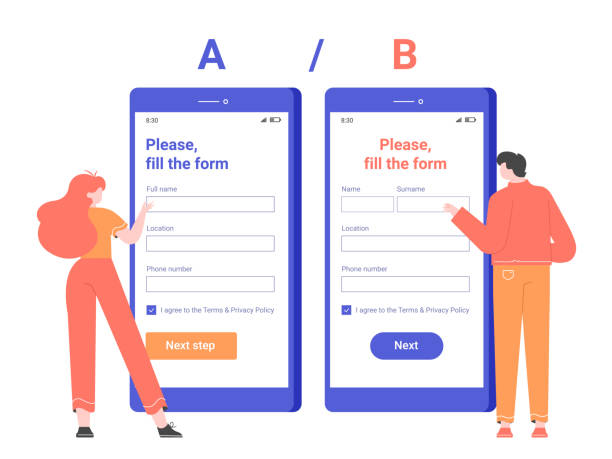
Web developers play a central role in secure website design.
Their responsibility goes beyond writing functional code and includes ensuring security from the very beginning of the software development lifecycle.
The first step in #SecureCoding is meticulous user input validation.
All input data from forms, URLs, cookies, and HTTP headers must be scrutinized to ensure they do not contain malicious code or unauthorized values.
This prevents attacks like SQL Injection and XSS.
Additionally, using ORMs (Object-Relational Mappers) can help prevent SQL injection, as these tools use Prepared Statements by default.
Proper session management and authentication are also among the key responsibilities of developers.
Session tokens should be randomly generated, have a limited lifespan, and expire after user logout or inactivity.
Using secure cookies with HttpOnly and Secure flags is also essential to protect session tokens from theft.
Furthermore, developers must adhere to the principle of least privilege, meaning that each part of the code or user only requires the minimum necessary access to perform its task.
This approach reduces the risk of an intrusion affecting a larger portion.
Finally, security code review by a colleague or automated tools can uncover vulnerabilities that the original developer might have missed.
Active participation of developers in the secure website design process ensures the creation of websites that are resilient to modern threats and instill confidence in users.
Is your company’s website not displaying your brand’s credibility as it should, or is it driving away potential customers?
Rasawweb, with years of experience in professional corporate website design, is your comprehensive solution.
✅ A modern, beautiful website tailored to your brand identity
✅ Significantly increase lead generation and new customers
⚡ Contact Rasawweb now for a free corporate website design consultation!
Continuous Updates and Maintenance in Secure Website Design

Secure website design is not a one-time event but a continuous process that requires constant attention and maintenance.
Cyber threats are constantly evolving, and new vulnerabilities are discovered.
Therefore, #SecurityUpdates and #SecurityPatches for all website components, from the server operating system and server-side software (such as web server, database, programming language) to frameworks, libraries, and plugins used, are crucial.
Neglecting these updates can make the website vulnerable to attacks that exploit known vulnerabilities.
Many successful attacks occur due to the failure to install security patches related to common vulnerabilities (CVEs).
In addition to software updates, #ContinuousMaintenance includes regular review of server logs to identify suspicious activities, periodic security scans to discover vulnerabilities, and scheduled penetration tests.
Regular and automated backups of all website data and code, especially before applying any major changes or updates, are also an essential component of security maintenance.
These backups should be stored in a secure, off-site location to allow for complete and rapid recovery in the event of an incident.
Furthermore, monitoring website performance and responding quickly to any security alerts or disruptions is of paramount importance.
A proactive maintenance plan ensures that your secure website design remains robust over time and adaptable to new threats.
This preventive approach significantly reduces the potential costs associated with security breaches.
SSL Certificates and Their Importance in User Trust

One of the main pillars of secure website design and building #UserTrust is the use of an SSL (Secure Sockets Layer) certificate or its more updated version, TLS (Transport Layer Security).
This certificate creates a security layer that #DataEncrypts communications between the user’s browser and the website server.
In other words, any data exchanged between the user and the server, including personal information, passwords, or banking details, becomes unreadable to prevent eavesdropping or manipulation by attackers.
The presence of SSL/TLS is clearly indicated to users by a lock icon next to the website address in the browser’s address bar and the change from the HTTP to HTTPS prefix, showing that the website is secure.
There are different types of SSL certificates, each offering a different level of validation: from Domain Validation (DV) which only confirms domain ownership, to Organization Validation (OV) and Extended Validation (EV) which also verify organizational information.
An EV certificate provides the highest level of trust and usually displays the organization’s name in the address bar.
In addition to security, the use of HTTPS is also considered a positive factor by search engines like Google for website ranking.
This means that secure website design not only helps protect data but can also lead to improved website visibility in search results.
Investing in a suitable SSL certificate is not only a security measure but also a smart strategy for marketing and increasing customer trust.
Without this security layer, your website will not only be exposed to attack risks but may also be flagged as “not secure” by browsers, severely impacting user experience.
Advanced Tools and Techniques for Enhancing Web Security

In addition to basic principles, to achieve secure website design at higher levels, the use of advanced tools and techniques is essential.
One such tool is Intrusion Detection Systems (IDS) and Intrusion Prevention Systems (IPS).
IDS monitors network traffic to identify suspicious activities and alerts, while IPS not only identifies but actively blocks intrusions.
Another, the Web Application Firewall (WAF) previously mentioned, acts as a security gateway in front of the website, analyzing HTTP/HTTPS traffic for malicious attack patterns.
Penetration Testing and vulnerability scanners are also crucial techniques for discovering security weaknesses before attackers find them.
Scanners automatically check the website for known vulnerabilities, while penetration testing involves simulating real attacks by security professionals to identify more complex and logical vulnerabilities.
Using Cloud Security Services can also provide additional layers of defense, including DDoS protection and traffic filtering.
For websites dealing with sensitive data, implementing Security Information and Event Management (SIEM) systems to collect and analyze security logs from various sources, in order to quickly identify threats, is highly beneficial.
These tools and techniques complement the basic principles of secure website design and help you create a stronger, multi-layered defense against cyber threats, ensuring your website is more resistant to intrusions.
| Tool/Technique | Main Function | Advantage |
|---|---|---|
| IDS/IPS | Detection and prevention of network-level intrusions | Real-time protection against known attacks |
| Penetration Testing | Simulating attacks to discover vulnerabilities | Identifying complex and logical vulnerabilities |
| WAF (Web Application Firewall) | Protection of web applications against Layer 7 attacks | Filtering malicious HTTP/HTTPS traffic |
| SIEM | Collection and analysis of security logs | Rapid identification of threats and security incidents |
Facing Security Breaches and Emergency Response
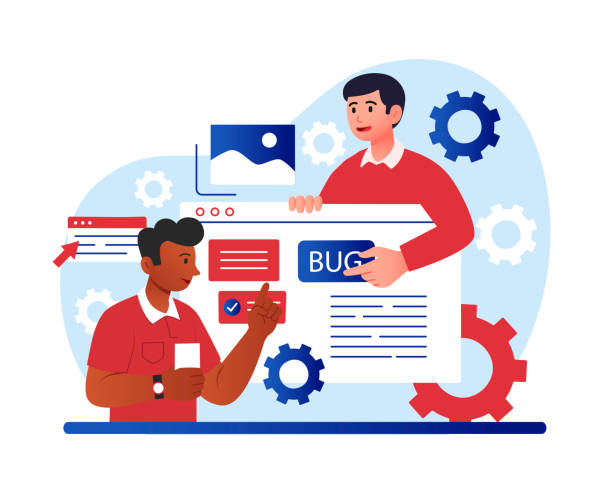
Even with the best approaches to secure website design, the probability of a security breach never reaches zero.
Therefore, having an #IncidentResponsePlan to deal with such situations is vital.
This plan should include specific steps that the security team or developer must take if an intrusion is detected.
The first step is #IncidentIdentification, which can be revealed through system alerts, user reports, or security scans.
After identification, immediate action must be taken to #ContainTheIncident, meaning efforts should be made to prevent the spread of the intrusion, for example, by isolating infected systems or cutting off attacker access.
The next step is #Eradication, which involves completely removing the cause of the intrusion and any malware or backdoors planted by the attacker.
This phase may include completely cleaning systems and rebuilding them from secure backups.
After eradication, it’s time for #DataRecovery and service restoration.
This involves returning systems to normal operational status with the use of valid and secure backup copies.
The last and perhaps most important step is #LessonsLearned (Post-Incident Analysis) from the incident.
In this stage, all details of the incident, including the method of intrusion, the extent of damage, and the effectiveness of the response, should be reviewed to improve preventive measures and prevent similar incidents from recurring.
Transparent communication with users when necessary (depending on the type and amount of compromised information and relevant regulations such as GDPR) is also an important part of crisis management.
A strong emergency response plan complements secure website design and enables businesses to be more resilient to security crises and maintain their reputation.
Is your company’s website not displaying your brand’s credibility as it should, or is it driving away potential customers?
Rasawweb, with years of experience in professional corporate website design, is your comprehensive solution.
✅ A modern, beautiful website tailored to your brand identity
✅ Significantly increase lead generation and new customers
⚡ Contact us now for a free consultation!
The Future of Secure Website Design and New Challenges

The future of secure website design is accompanied by new challenges and opportunities that need to be carefully examined.
With the emergence of new technologies such as #ArtificialIntelligence and #MachineLearning, on the one hand, these technologies can be used to strengthen security (e.g., in detecting complex attack patterns or automating threat responses), and on the other hand, attackers can also leverage them to create more advanced attacks.
#BlockchainSecurity, due to its distributed and encrypted nature, also has high potential in increasing data security and online identity, but its widespread implementation still faces challenges.
Another challenge is maintaining data privacy in a world where data is increasingly collected and analyzed.
Regulations like GDPR and CCPA place strong emphasis on #DataPrivacy and user consent, requiring developers and website designers to adhere to stricter standards in collecting, storing, and processing information.
Quantum threats, although still in early stages, could potentially break many current encryption algorithms, which will necessitate the development of new, quantum-resistant encryption methods.
The increase in attacks on the software supply chain (Supply Chain Attacks) and the need for third-party component security is also a growing challenge.
Secure website design in the future will require a dynamic, proactive, and collaborative approach from the global community to address these challenges and leverage the opportunities of emerging technologies.
Businesses must take investment in research and development in this area seriously.
Conclusion and Next Steps in Secure Website Design
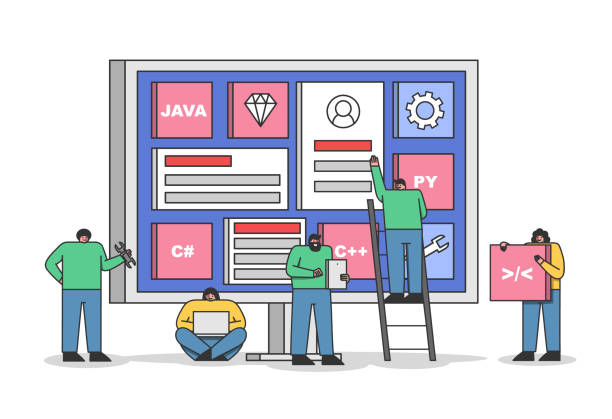
As extensively discussed in this article, secure website design is a multifaceted and essential process in today’s digital world.
This process begins with choosing basic security protocols like HTTPS and continues through implementing secure coding principles by developers, continuous maintenance and updates, using advanced security tools, and having a defined plan for responding to security incidents.
Website security not only protects sensitive information but also builds user trust and contributes to business stability and growth in the long term.
For all online stakeholders, the next steps in secure website design include the following:
-
Continuous Education: Given the rapid evolution of cyber threats, #ContinuousTraining for development and security teams on the latest intrusion and defense methods is essential.
-
Investment in Appropriate Tools: Using web application firewalls, IDS/IPS systems, and penetration testing tools can significantly increase the level of security.
-
Regular Backup and Recovery: Ensuring off-site backups exist and planning for rapid recovery in case of an incident.
-
Incident Response Planning: Developing and practicing an emergency response plan to mitigate damages in the event of a security breach.
-
Periodic Security Audits: Conducting regular security assessments by independent experts to discover hidden vulnerabilities.
By observing these principles and continuous follow-up, websites can be built that are not only functionally efficient but also secure and trustworthy.
Secure design and implementation is an essential investment for any online entity that wishes to achieve success and longevity in the digital space.
Frequently Asked Questions
| Question | Answer |
|---|---|
| 1. What does secure website design mean? | Secure website design means creating a website that is resistant to cyber attacks and protects user and server information. |
| 2. Why is security important in website design? | To prevent data breaches, maintain user privacy, retain user trust, and avoid financial and reputational losses. |
| 3. What are the most common web vulnerabilities? | SQL Injection, Cross-Site Scripting (XSS), Cross-Site Request Forgery (CSRF), Broken Authentication, and Security Misconfiguration. |
| 4. How can SQL Injection be prevented? | By using Prepared Statements / Parameterized Queries, ORMs, and Input Validation. |
| 5. What is the role of HTTPS and SSL/TLS in website security? | HTTPS, using the SSL/TLS protocol, encrypts communication between the user’s browser and the server, preventing eavesdropping and data manipulation. |
| 6. What measures should be taken to prevent XSS attacks? | Input validation, Output Encoding to prevent malicious code execution, and using Content Security Policy (CSP). |
| 7. What does a strong password policy include? | Enforcing the use of long passwords, a combination of uppercase and lowercase letters, numbers, and special characters, and preventing reuse. |
| 8. How does Two-Factor Authentication (2FA) help with security? | Even if a user’s password is compromised, the attacker cannot access the account without access to the second authentication factor (such as an SMS code or an app). |
| 9. What is a Web Application Firewall (WAF) and what is its use? | A WAF is a firewall that monitors and filters HTTP traffic between a web application and the Internet to prevent common web attacks like SQL injection and XSS. |
| 10. Why is regular updating of software and libraries important? | Updates often include security patches to fix discovered vulnerabilities. Failure to update can expose the site to new attacks. |
And other services of RasaWeb advertising agency in the field of advertising
Smart SEO: Designed for businesses looking to increase sales through Google advertising management.
Smart Sales Automation: Professional optimization to increase click-through rates by optimizing key pages.
Smart Custom Software: A professional solution for analyzing customer behavior with a focus on custom programming.
Smart Digital Advertising: Transform campaign management with the help of key page optimization.
Smart Link Building: Professional optimization for analyzing customer behavior using intelligent data analysis.
And over hundreds of other services in the field of internet advertising, advertising consultation, and organizational solutions
Internet Advertising | Advertising Strategy | Advertorial
Resources
Secure Website Design, Website Security Tips, Secure Website Design Services, Importance of Website Security
? Rasawweb Afarin Digital Marketing Agency specializes in enhancing your business in the online space. From fast website design and professional services to SEO optimization and advertising campaign management, we pave your digital success path.
📍 Tehran, Mirdamad Street, next to Central Bank, Kazeroon Jonoubi Alley, Ramin Alley, No. 6

